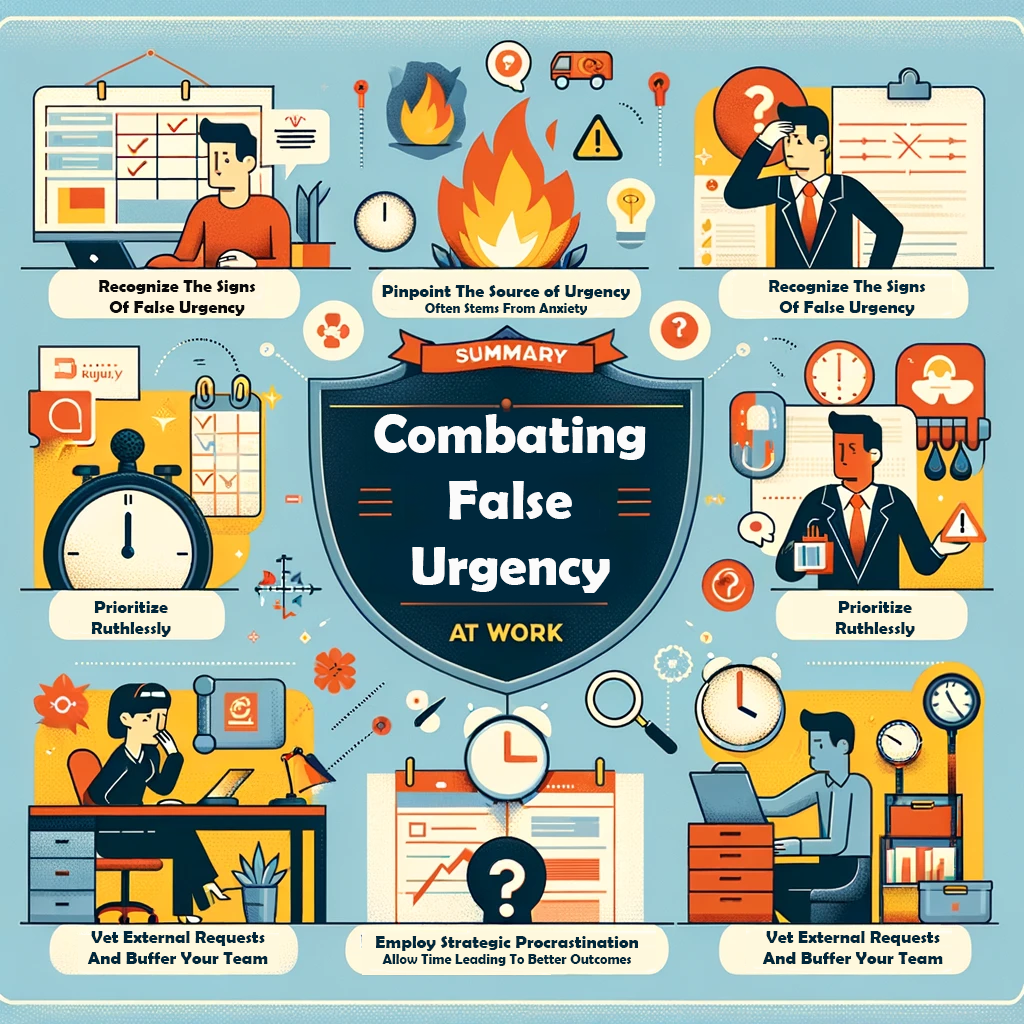
5 Steps to help combat a culture of false urgency at work
1) Recognize the Signs of False Urgency: Leaders should be aware of chronic overwhelm, reactivity, and frequent fire drills, which are indicators of false urgency. Recognizing these signs is the first step in addressing the issue.
2) Pinpoint the Source of Urgency: False urgency often stems from anxiety, such as fear of disappointing clients or being seen as uncooperative. Leaders need to identify the underlying reasons for urgency and challenge limiting beliefs to reframe their approach.
3) Prioritize Ruthlessly: Leaders should focus on prioritizing important tasks over urgent ones. Techniques like creating psychological distance can help in maintaining focus on what truly matters, thus avoiding the trap of false urgency.
4) Employ Strategic Procrastination: Use strategic procrastination to allow time for creativity and insight. This involves managing stakeholder expectations and allowing more time for tasks to be completed, leading to better outcomes.
5) Vet External Requests and Buffer Your Team: Leaders should filter external requests to protect their team from unnecessary urgency. This involves questioning the urgency of requests, discussing trade-offs, and empowering the team to push back against unrealistic timelines or demands.
Implementing these strategies can help create a more focused and productive work environment, reducing unnecessary stress and enhancing team performance.
More details here: https://bit.ly/3SCg90n